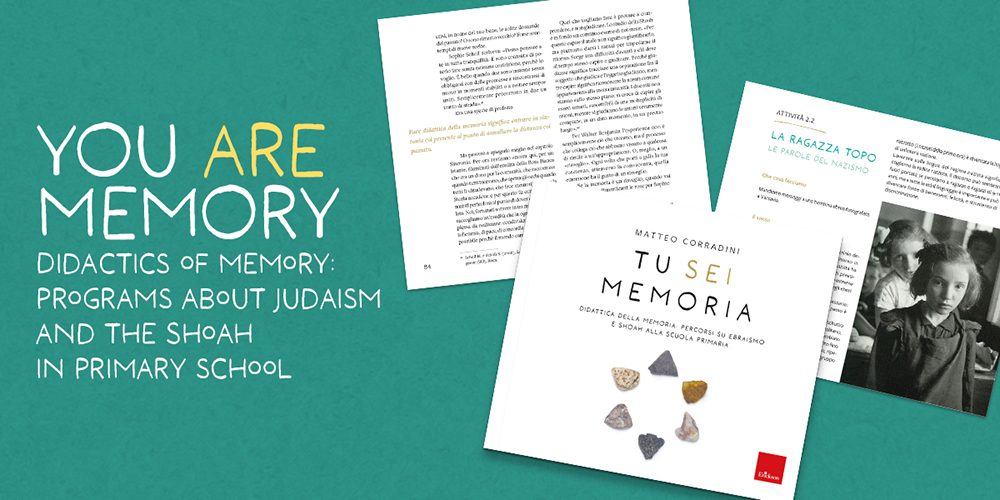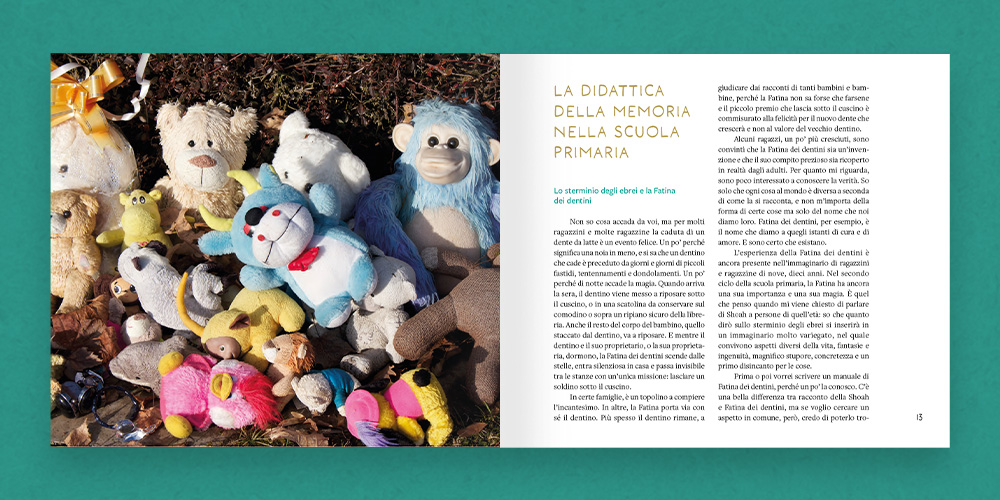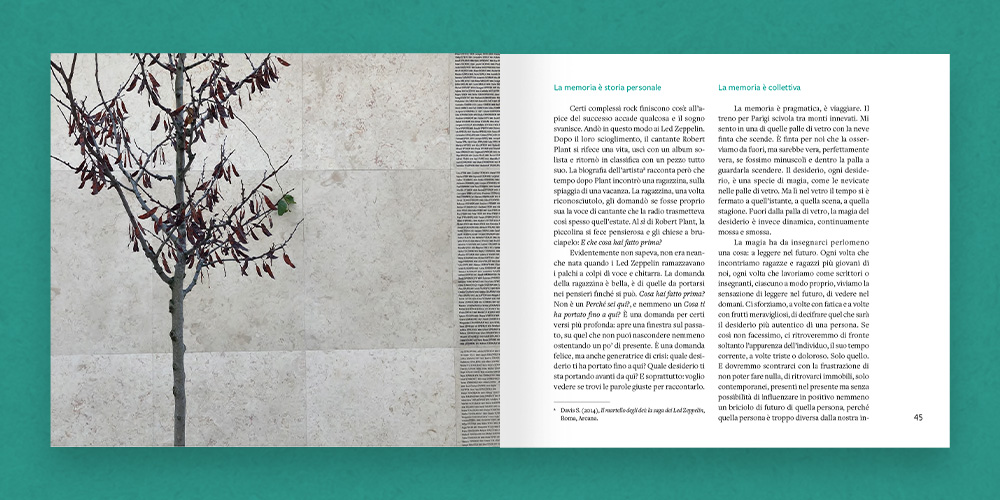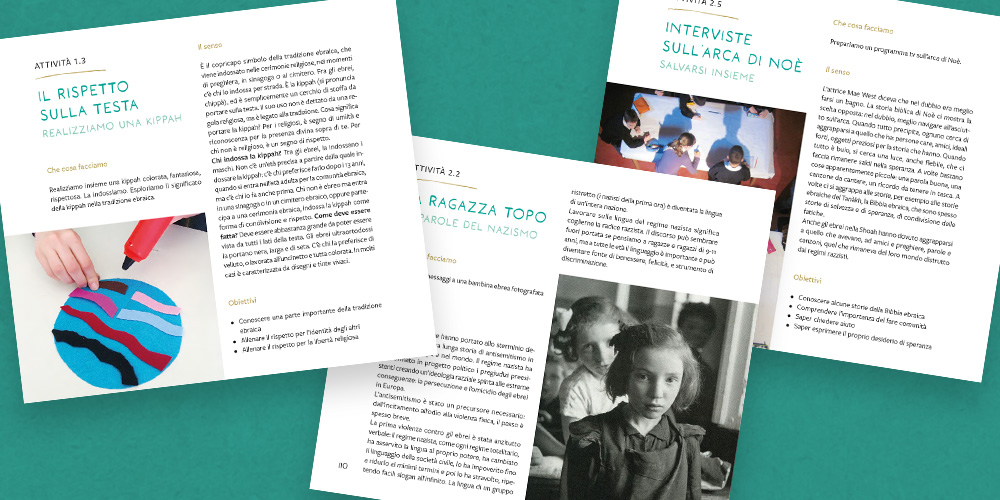 EN
EN
 PT
PT
Didactics of memory: programs about Judaism and the Shoah in primary school
Product: Book
Trim size in cm: 20x17,5cm
Pages: 152
ISBN: 9788859027522
Publication date: 01/11/2022
Suitable for: Primary 1st level (ages 6-7), Primary 2nd level (ages 8-10)
REQUEST A SAMPLE OR MORE INFORMATION
The volume proposes an attentive and aware education program about the Shoah, complete with theoretical and practical tools. It offers methodical indications, stimulating teachers’ personal openness towards these topics, and numerous working proposals to involve the classes in interesting practical paths.
The program is divided into 5 stages, each stage contains different proposals for in-depth study, research, expression, laboratory: from the exploration of Jewish culture to the mechanisms of prejudice and marginalization put in place by the Nazi and Fascist regimes, up to the start and the completion of the extermination of millions of people.
At the end of the program, the volume proposes 20 activities conceived as independent, but the individual proposals can be included in a broader framework.

Memorial didactics: lessons on Judaism and the Shoah in primary school

« For didactic memory it is necessary to contextualize the Holocaust within a continuous path, understanding that that precise moment, so often depicted in books and movies, is the terminal point of a journey of hate, propaganda, violence and racist politics. » - (Matteo Corradini)
The volume
The book offers a journey of discovery of memory divided into 5 stages and 20 activities complete with theoretical and practical tools to talk about memory and the Shoah in primary school. It offers methodological indications, stimulating the personal openness of teachers towards these topics, and numerous operational proposals to involve the classes in interesting practical paths.
Targets
The activities proposed in this memory teaching manual are designed for students to have meaningful and formative experiences, and for their "remembrance" to be sensible and engaging.
Each stage of the process corresponds to general objectives, just as each single activity has specific objectives. The course is designed to train the teachers themselves and all those who wish to accompany students in an authentic and profound educational relationship.
Volume structure
The course is divided into 5 stages. Each stage contains various proposals for further study, research, expression, and workshops: from the exploration of Jewish culture to the mechanisms of prejudice and marginalization implemented by the Nazi and fascist regimes, up to the start and completion of the extermination of millions of people. At the end of the course, another 20 independent activities, to be included in a broader framework.
The volume offers:

The description of the method and programme proposed by the author for teaching the memory of the Holocaust.

Reflections on the meaning and value of memory with the aim of helping us to become memories of the past ourselves.

A section with 20 activities to be proposed in class to talk about:
Leaf through some selected pages from the book that have been translated into English to facilitate your evaluation:
THE AUTHORS
Matteo Corradini is a Hebraist and a writer. He prepares musical readings, theatrical productions, and memorial teaching projects. A recipient of the Andersen Award 2018, he is one of the curators of the ‘writer city festival’ (Cuneo). Since 2003 he has been researching the Terezín ghetto, recovering stories, objects and musical instruments, and is one of the founders of the Institut terezínských skladatelů (Terezín Composers Institute) in Prague.